Color Schemes for Flower Gardens
Guidelines for combining colors in your landscape design
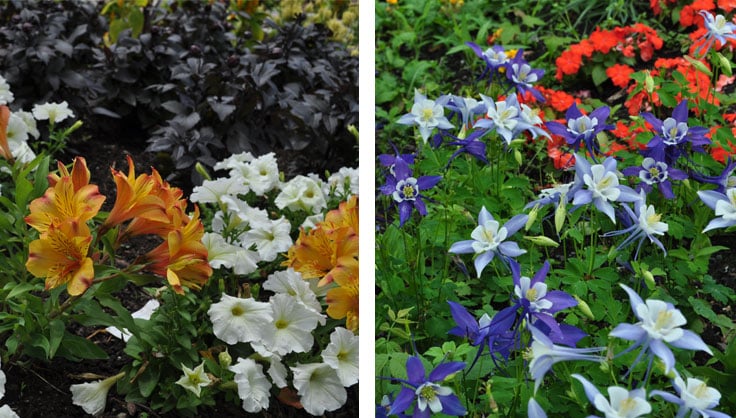
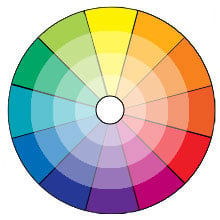
Color is usually the first thing people notice when they see a flower garden, and choosing plants in pleasing color combinations can be daunting to a new gardener. The color wheel is a helpful tool. It's based on three primary colors — red, yellow, and blue — and also depicts the colors in between.
The concentric bands show the colors in different degrees of saturation. Fully saturated colors are the most intense; as you move toward the center of the wheel, the colors become softer, more pastel.
Warm colors. Yellow, orange, red, magenta — these "warm" colors bring energy and excitement to a planting. When planted at a distance, they draw the eye in.
Cool colors. Purple, violet, and blue tend to be soothing and quieting. They can get lost at a distance and so are best for close-up viewing.
There are no hard-and-fast rules in choosing colors. A bold chartreuse green might fall into the "warm" category, while a softer, pastel shade of that same green might fit right in with a cool-color palette.
The most important design tip? Choose plants and colors that you love!
Designers use specific terms to describe color combinations. To help you get started, here are a few examples:
Complementary Color Scheme

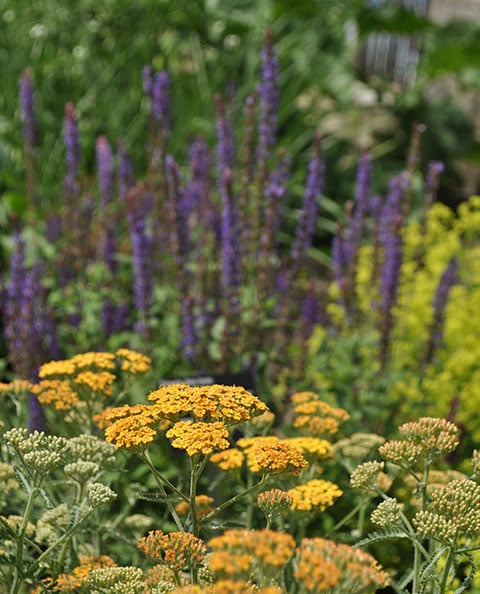
In complementary color schemes, two colors on opposite sides of the color wheel are combined.
- Brings energy and excitement to a planting
- Examples: blue and orange, yellow and purple, red and green
- Use varying hues (shades of blue, for example) to keep it interesting
- If needed, tone it down with quieter colors and foliage
Analogous Color Scheme

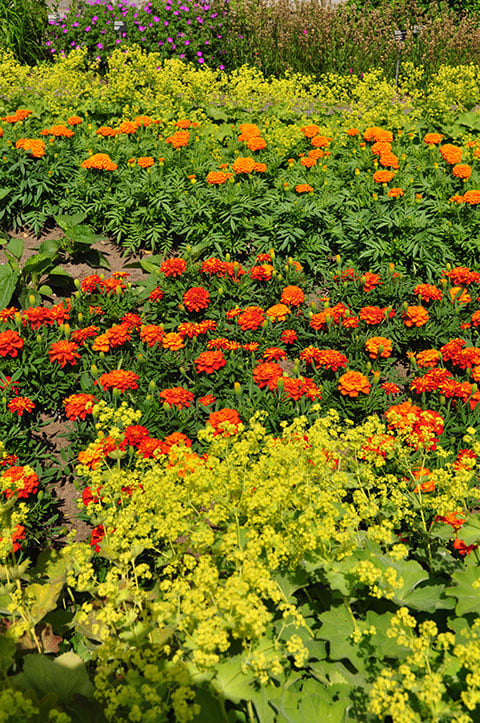
To create an analogous color scheme:
- Select three neighbors on the color wheel (colors that are adjacent or near each other)
- Makes it simpler to choose plants that are attractive together
- Examples: yellow, orange and red; blue, purple and red
Monochromatic Color Scheme
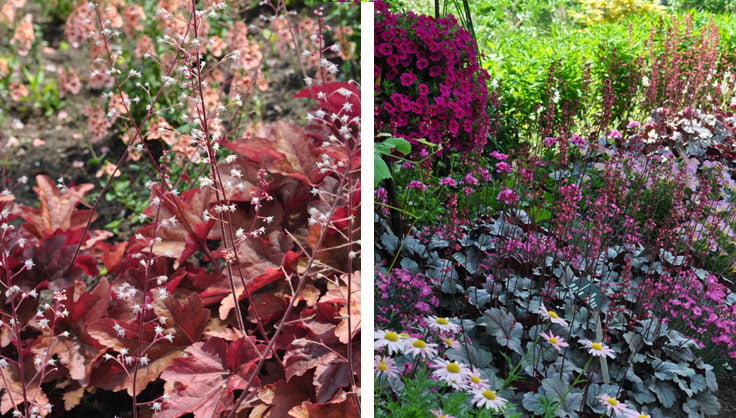
Another option for a monochromatic color scheme is a "moon garden." Gardens featuring all white flowers are especially beautiful when viewed by moonlight. Good choices include moonflower (Ipomoea alba), night-blooming jasmine (Cestrum nocturnum), and evening stock (Matthiola incana).
Print this Article:
Get the Dirt
Stay up to date on new articles and advice. Please fill out the information below.

